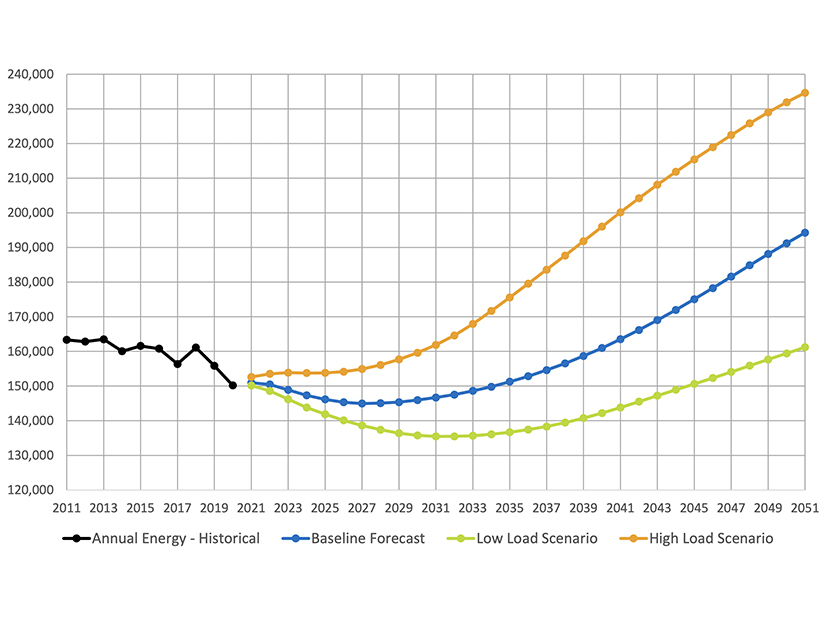The Natural Resources Defense Council on Wednesday urged NYISO to commit to expand its distributed energy resources participation model to facilitate energy efficiency participation in the capacity market as part of the ISO’s Order 2222 compliance filing later this month.
Order 2222’s definition of DER includes EE, which is “an essential resource” for achieving New York’s goals laid out in the Climate Leadership and Community Protection Act (CLCPA), NRDC Senior Attorney Christopher Casey told the Installed Capacity/Market Issues Working Group.
EE provides a variety of economic and social benefits by reliably and permanently reducing demand and thereby avoiding infrastructure costs, Casey said. It lowers customer bills, lessens inequitable energy burdens, enhances the effectiveness of other DERs and creates non-energy benefits such as lower emissions, improved comfort and satisfaction in buildings, and increased property values, he said.
The CLCPA’s short-term goals include 185 TBtu of customer-level energy reduction statewide by 2025, and the Public Service Commission identified EE as playing a key role in the state’s clean energy transition, a role amplified by the coming electrification of heating and transportation, Casey said.
NYISO estimates that the contribution from EE and codes and standards (EE/C&S) will grow about 10 times between 2022 and 2040. Casey referred to the 2021 Gold Book, wherein NYISO estimates peak load reduction of 8,229 MW and 47,768 GWh from EE/C&S by 2040. Compared with the 2022 forecast of 860 MW and 5,096 GWh, the 2040 estimate is almost 10 times more.
Operational Benefits
Several stakeholders disagreed that the order requires EE, which they said is not technically capable of providing capacity service.
Doug Hurley of Synapse Energy Economics presented the case for operational benefits and improved market outcomes from supply-side participation by EE, but first interjected to say that EE “is technically capable of providing capacity. I think it operates very similarly to a self-scheduled, daily cycle resource.”
Other such resources on the system are eligible for the capacity market if they choose to participate in it, and EE does the same thing, Hurley said.
“There are a couple of decades worth of measurement and verification work that go into showing how much energy efficiency is actually producing during certain hours of the day that we can rely on to demonstrate that,” Hurley said.
The Brattle Group recently published two new papers that highlight the importance of EE participation as a supply-side resource in capacity markets, and several adjacent RTOs have a track record of more than 15 years of successfully integrating EE that way.
NRDC recommended that NYISO promise FERC to include in a separate filing by a specific date a participation model for EE that the ISO will develop with stakeholders.
As to whether an industrial end user implementing EE might be eligible for capacity payments, Hurley said “that is a detail we have to work out. We have to make sure that whatever we decide fits in well with the entirety of the New York ISO markets and all the rest of the design aspects. I’ve heard it discussed in both ways in different regions.”
Proper accounting of EE is important for a market mechanism to work, and “the key here is that any one megawatt of energy efficiency is only counted on one side or the other [supply or demand], but not both,” Hurley said. “We would have to figure out what is the right version of this that makes sense of both the timing and the specifics of New York’s markets.”


